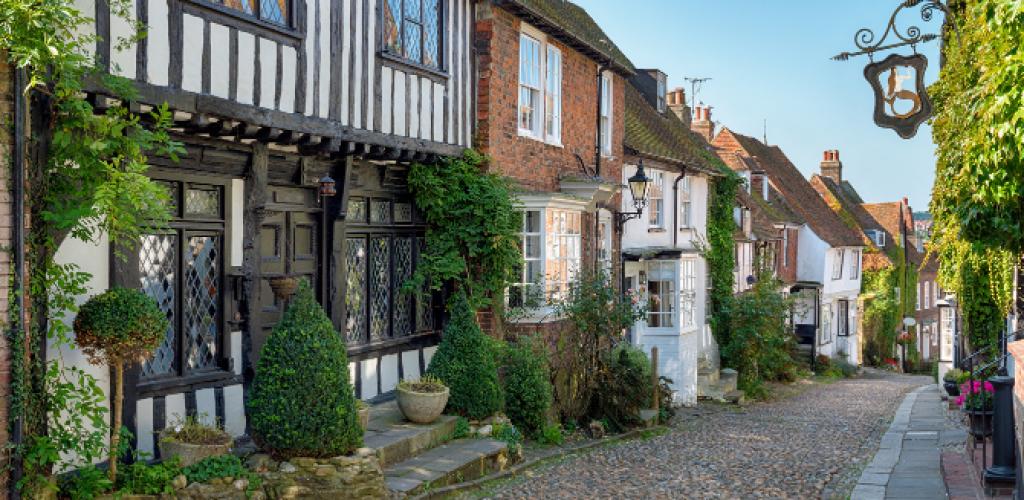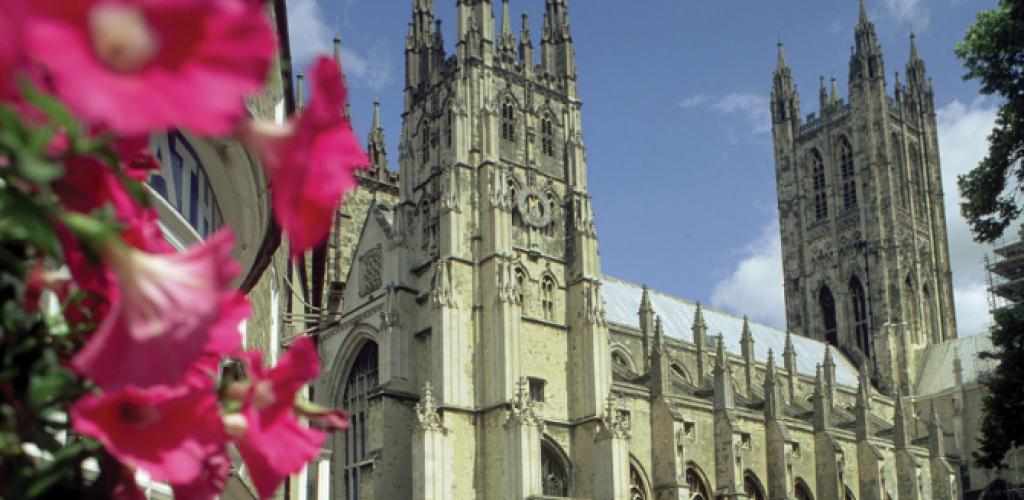
Kent and Sussex - A Charming Slice of England
Kent: A city divided
A Kentish Man or a Man of Kent? This has been the traditional way of deciding the people of west Kent from those the eastern side of the river Medway. Those on the western side have long been corrupted by London, the great metropolis dominating the southeast of England since the Middle Ages. City merchants built grand houses within a day’s ride of London and played the country squire. But for a hundred years and more people have commuted to ‘town’ by train. The countryside they leave each morning has been well protected by privilege and wealth - it’s villages bastions of middle-class values and aesthetic sensibilities…in Sussex was the first property to be bought by the National Trust in 1896 and since then numerous old farmhouses, castles and stately homes have been acquired for the nation. Even buildings not open to the public have been lovingly restored.

Charming Cottages and Indomitable Castles
In this part of England oak framed buildings (their timbers often salvaged from ships – the coast is never far away) jostle with Kentish ragstone, whitewashed weatherboards and warm, reddish/brown tiles of every shade and hue. And then there is flint, the main building stone of the chalk ‘downs’ (hills in the upside-down world of English naming), used often in the unsurpassed ancient churches that punctuate this green and pleasant land. The flat topped, steep sided downs, march west to east across the two counties and meet the English Channel in the white cliffs of Dover and Beachy Head, reminders to passing shipping of fortress Britain ‘where children have slept safe in their beds for a thousand years’. This proud declaration is not strictly true of course: Kent and Sussex have always been the frontier of the British Isles. The Romans invaded twice through Kent to finally conquer in AD.43 and the Normans defeated the old English Saxons and their king, Harold, near Hastings, Sussex, in 1066. But even since then the two counties were targets for French raiders during the Hundred Years War, explaining the numerous moated castles, of which Bodiham is the finest example.
The 1000 year old Dover Castle has twice been involved in organising resistance to attack in relatively modern times. During the Napoleonic Wars tunnels were dug beneath the castle as barracks for defending Redcoats and in the Second World War these were used as a defence coordinating centre by the RAF during the Battle of Britain. During the middle ages Kent was also a rebellious place, sending more than one marching band of men to the London to challenge the status quo. The most famous uprising was the Peasants Revolt of 1381, when a large band of malcontents marched to the capital and rather trashed the place before their leader, Wat Tyler was stabbed and killed by the Lord Mayor in front of a young Richard II.

Maintaining tradition in a changing countryside.
However, this little corner of England has not so much resonated with violence as with change. Under St Augustine England was re-conquered by Christianity through Kent when he landed here in 597, a peaceful invasion that led to the establishment of England’s two earliest cathedrals, Canterbury and Rochester. This is why to this Canterbury is the senior cathedral of England and its Archbishop chief prelate of the Anglican Church. As a separate Saxon kingdom, Kent was also the first part of Christendom to write its own laws in its own language, English. Kings and armies, fashions and new ideas have often travelled backwards or forwards through this part of England. But Kent and Sussex remain surprisingly unchanged. Kent's old English charm evident with its distinctive yet unique Oast houses scattering the countryside offering a glimpse of England's traditional days of brewing. Yet not too far away you will see glimpses of the future - the local wineries starting to receive international recognition due to its favourable climate for the production of sparkling wine. Squashed between London and continental Europe, and with notable exceptions like Brighton, these two countries can sometimes fell like backwaters. But for richness of scenery and sheer density of interest they are unsurpassed anywhere in England.
Be sure to climb to the top of Rochester Castle Keep and enjoy the same fabulous view that Mr Pickwick enjoyed in Charles Dickens’s Pickwick Papers. And down on Brighton pier, ask for an ‘open portion’ of cod & chips, find a bench and people-watch while you munch.

